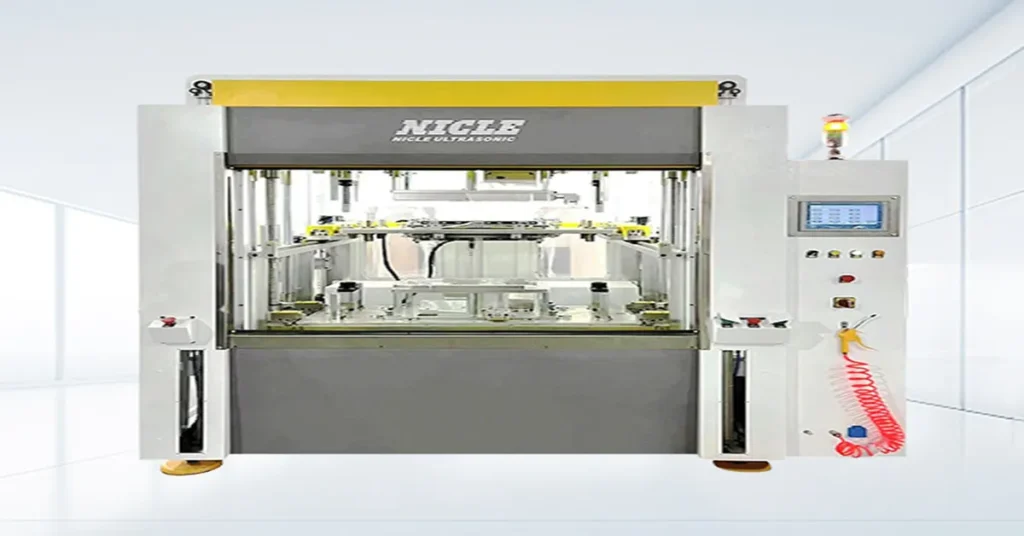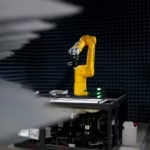Servo hot plate welding machines are vital tools in manufacturing processes that demand precision and reliability. Industries such as automotive, medical devices, and electronics depend heavily on these machines to achieve consistent and high-quality outcomes in plastic welding and assembly.
This article explores how advancements like programmable logic controllers (PLCs) and feedback loops have revolutionized the performance of servo-driven hot plate welding machines. By enhancing key aspects such as force application, temperature regulation, and movement synchronization, these technologies ensure repeatable, efficient, and error-free operations.
The Role of Advanced Control Systems in Servo Hot Plate Welding Machines
Servo hot plate welding machines are equipped with intelligent control systems that enhance their functionality. These systems ensure seamless operations by utilizing real-time data and customizable configurations.
Programmable Logic Controllers (PLCs)
PLCs are essential components of modern servo hot plate welding machine systems. These devices execute pre-set programs to regulate force, temperature, and motion profiles, allowing for high levels of customization.
Operators can reconfigure PLC settings to adapt the machine for different materials and production requirements. This adaptability makes servo hot plate welders an ideal choice for diverse industrial applications.
Feedback Loops
Feedback loops provide critical performance data during the operation of servo hot plate welding machines. By continuously monitoring variables like force and temperature, these systems ensure that deviations are corrected instantly.
For example, if a servo hot plate welding machine detects a slight variance in temperature, the feedback loop triggers an adjustment to restore optimal conditions. This capability ensures consistent performance across production cycles.
Enhancing Precision in Key Areas with Servo Hot Plate Welders
Servo hot plate welders achieve precision in three essential areas: force application, temperature regulation, and movement synchronization. These factors are critical for high-quality and repeatable welding processes.
Force Application
Applying consistent force is a key requirement in servo-driven hot plate welding machines. Integrated load cells measure and adjust the applied force with exceptional accuracy, ensuring strong and reliable welds.
This feature is particularly useful when working with materials that have varying properties. The machine’s ability to adapt prevents damage to components and enhances the overall quality of the weld.
Temperature Regulation
Temperature control is vital for successful plastic welding in servo hot plate welding machines. Advanced heating systems and sensors work together to maintain uniform temperatures across the welding surface.
Real-time monitoring of heat levels ensures that the materials are not overheated or unevenly heated. This precision reduces defects and improves product durability.
Movement Synchronization
Servo-driven hot plate welding machines excel in movement synchronization. Coordinated motions of the welding components minimize errors, even in high-speed production environments.
This synchronization ensures that each operation is performed with consistent timing and precision. It’s a critical factor in maintaining the quality and reliability of the final product.
Benefits of Improved Servo Hot Plate Welding Machines
The implementation of advanced control systems in servo hot plate welding machines has transformed their efficiency and performance. These systems offer numerous advantages to manufacturers aiming to improve productivity and reduce waste.
Enhanced Precision
Servo driven hot plate welding machines achieve micrometre-level precision, making them suitable for applications with tight tolerances. This accuracy ensures consistent results across multiple production cycles.
The repeatability offered by these machines also reduces the need for rework, saving time and resources. Manufacturers can depend on servo hot plate welders for high-quality output.
Reduced Waste
With precise control over welding parameters, servo hot plate welding machines minimize material waste. Fewer errors during the process mean less scrap and fewer defective products.
Additionally, the ability to fine-tune machine settings enhances the efficiency of resource use. This results in cost savings and a lower environmental impact.
Increased Productivity
Servo-driven hot plate welding machines feature automated systems that reduce production times. Their ability to handle high-speed operations without compromising quality is a significant advantage.
Moreover, these machines simplify the process of switching between different product configurations. This flexibility makes them ideal for industries with varied production needs.
Better Quality Assurance
Servo hot plate welding systems incorporate real-time monitoring to track production metrics. This data can be used for quality control and compliance with industry standards.
The automation of adjustments minimizes human error, further improving reliability. These features make servo hot plate welders a valuable asset in quality-sensitive industries.
Innovations Driving Servo Hot Plate Welding Machines
Emerging technologies are revolutionizing the capabilities of servo hot plate welding machines. These advancements include IoT connectivity, AI-driven analytics, and enhanced user interfaces.
IoT in Servo Hot Plate Welding Machines
IoT integration enables operators to monitor and manage servo-driven hot plate welding machines remotely. Sensors collect real-time data on machine performance, allowing for proactive maintenance and optimization.
For instance, IoT systems can alert operators to irregularities in force application or temperature control. This reduces the likelihood of downtime and ensures continuous operation.
AI and Machine Learning
AI and machine learning play a significant role in improving servo driven hot plate welding machines. By analyzing historical data, AI algorithms predict potential issues and suggest corrective measures.
For example, AI can identify patterns of wear in critical components like heating elements. Addressing these issues before they escalate enhances machine reliability and longevity.
User-Friendly Interfaces
Modern servo hot plate welding systems feature intuitive touchscreens and interactive dashboards. These interfaces provide operators with easy access to machine controls and performance metrics.
Simplified troubleshooting and quick adjustments improve operational efficiency. User-friendly designs enhance the overall usability of plastic welding equipment.
Applications of Servo Hot Plate Welding Machines
The advancements in servo hot plate welding machines have broadened their application across multiple industries. These machines excel in tasks requiring precision and consistency.
Automotive Industry
Servo hot plate welding machines are commonly used in automotive manufacturing. They weld plastic components with complex geometries, ensuring strength and durability.
The machines are also used to assemble dashboards, air vents, and other interior parts. Their ability to handle a variety of materials makes them indispensable in automotive production.
Medical Devices
Precision is critical in the medical field, and servo hot plate welding machines meet this demand. They are used to assemble surgical instruments, diagnostic equipment, and other medical devices.
Advanced control systems ensure that delicate materials are handled carefully. This results in reliable devices that meet strict regulatory standards.
Electronics Manufacturing
The electronics industry benefits from servo hot plate welding systems for bonding plastic casings and assembling intricate components. These machines protect sensitive electronic parts from damage during the welding process.
Their repeatability ensures uniform results, even in high-volume production settings. Servo-driven hot plate welding machines are essential for maintaining quality in electronics manufacturing.
The Future of Servo Hot Plate Welding Machines
The future of servo hot plate welding machines lies in the continued integration of smart technologies. Research and development efforts focus on improving connectivity, automation, and energy efficiency.
Collaborative Robotics
Collaborative robots (cobots) are being paired with servo-driven hot plate welding machines. Cobots handle repetitive tasks, allowing operators to focus on higher-value activities.
This combination of human expertise and robotic precision increases productivity while maintaining safety. It’s an exciting development in the evolution of smart manufacturing.
Energy Efficiency
Sustainability is a priority in modern manufacturing, and energy-efficient servo hot plate welding machines address this need. Advanced insulation and optimized power consumption reduce their environmental footprint.
These machines are also compatible with recyclable and bio-based materials. This aligns with global efforts to promote green manufacturing practices.
Self-Optimizing Systems
Future servo hot plate welding machines will leverage AI to optimize their performance automatically. These systems will learn from real-time data, adapting to varying conditions without manual intervention.
Self-optimizing machines promise unparalleled efficiency and precision. They represent the next frontier in manufacturing technology.
Conclusion
Servo hot plate welding machines have become indispensable in industries requiring precision and reliability. Advanced control systems, such as PLCs and feedback loops, have elevated their capabilities, ensuring consistent force application, temperature regulation, and movement synchronization.
From automotive to medical devices and electronics, servo hot plate welding machines are driving innovation across sectors. The integration of IoT, AI, and energy-efficient technologies promises even greater advancements in the future.
By investing in servo hot plate welders, businesses can achieve higher productivity, reduced waste, and improved quality assurance. These machines are not just tools but essential components of modern, sustainable manufacturing.







